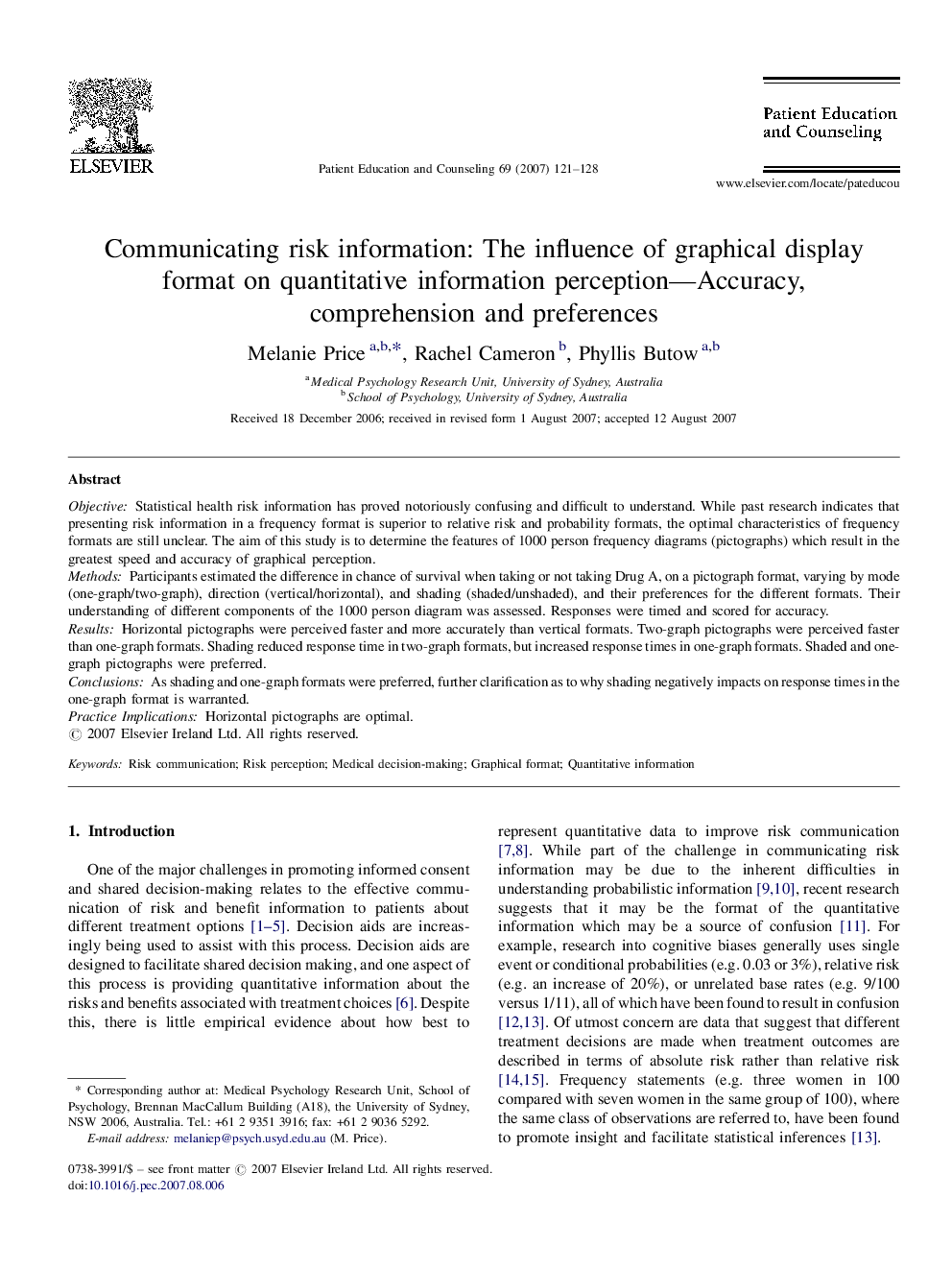| کد مقاله | کد نشریه | سال انتشار | مقاله انگلیسی | نسخه تمام متن |
|---|---|---|---|---|
| 3814370 | 1597706 | 2007 | 8 صفحه PDF | دانلود رایگان |

ObjectiveStatistical health risk information has proved notoriously confusing and difficult to understand. While past research indicates that presenting risk information in a frequency format is superior to relative risk and probability formats, the optimal characteristics of frequency formats are still unclear. The aim of this study is to determine the features of 1000 person frequency diagrams (pictographs) which result in the greatest speed and accuracy of graphical perception.MethodsParticipants estimated the difference in chance of survival when taking or not taking Drug A, on a pictograph format, varying by mode (one-graph/two-graph), direction (vertical/horizontal), and shading (shaded/unshaded), and their preferences for the different formats. Their understanding of different components of the 1000 person diagram was assessed. Responses were timed and scored for accuracy.ResultsHorizontal pictographs were perceived faster and more accurately than vertical formats. Two-graph pictographs were perceived faster than one-graph formats. Shading reduced response time in two-graph formats, but increased response times in one-graph formats. Shaded and one-graph pictographs were preferred.ConclusionsAs shading and one-graph formats were preferred, further clarification as to why shading negatively impacts on response times in the one-graph format is warranted.Practice ImplicationsHorizontal pictographs are optimal.
Journal: Patient Education and Counseling - Volume 69, Issues 1–3, December 2007, Pages 121–128